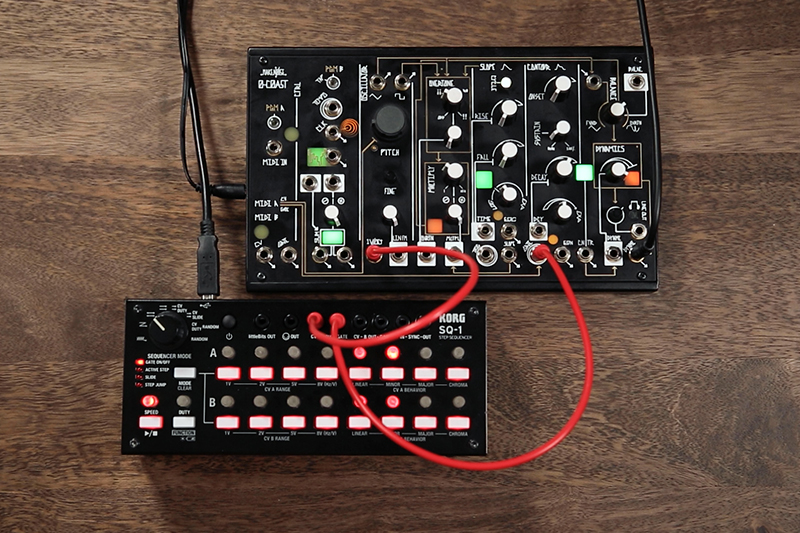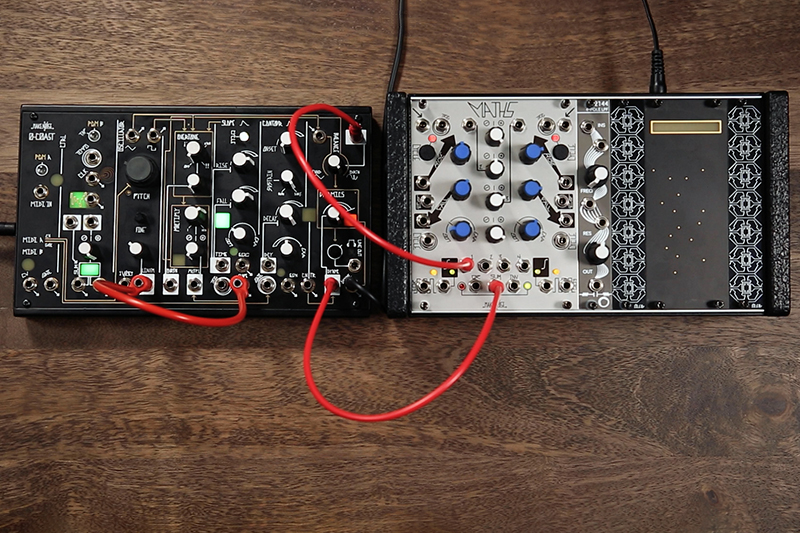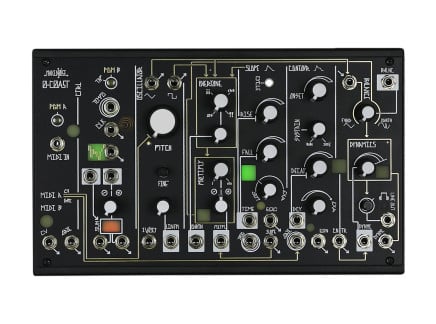Make Noise's 0-Coast is an enduring modern classic synth—after making it into shops around two years ago, it instantly found a home in studios across the world. And while it immediately resonated with modular aficionados and studio heads, its amazing price, well-considered feature set, and novel approach to sound design also piqued the attention of eager newcomers to the electronic music world. After getting to know their 0-Coasts, many of these musicians' practices branched out in various ways—and we've had the good fortune to work with many of them firsthand.
In the above video, we quickly explore some of the ways that a 0-Coast (or any semi-modular synth) can be expanded with even just a few additional tools. Using an Erica Synths Pico Case and an external sequencer, we set up a quick couple of scenarios illustrating how the 0-Coast can be expanded. Of course, the world of modular synthesis is endlessly flexible and customizable—but we thought we'd outline a few simple ways to get your 0-Coast to go just a little bit farther.
Expanding the 0-Coast
Semi-modular synthesizers are often a great value and a great learning tool for musicians curious about modular synthesis. They combine all the best parts of modular synths with a "pre-patched" signal flow that makes them easy to use right out of the box, all while maintaining a considerably more affordable price point than the average Eurorack system. There are tons of great semimodular synths out there: the Moog Mother-32, Arturia Minibrute 2, and Erica Synths Pico System III, for instance, are some excellent options. And then, of course, there's the Make Noise 0-Coast.
It's no secret that we think the 0-Coast is awesome. Not only does it sound great—it packs an astonishing amount of functionality into an astonishingly small package for an excellent price. Furthermore, its balance of normalled internal signal path, patchability, and inclusion of many previously "modular-only" concepts has made it a spectacular entry point into the world of modular synthesis. I've seen rather a lot of musicians find their way into entirely new workflows and musical styles via the 0-Coast, and I sincerely believe that the world of electronic music is more interesting because of its existence.
 Make Noise's 0-Coast and the Korg SQ-1 side by side.
Make Noise's 0-Coast and the Korg SQ-1 side by side.
After getting to know the 0-Coast (or other semi-modular synths), we've found that many musicians want to dig deeper into modular synthesis. Many want additional ways of controlling their instrument—while the 0-Coast works excellently with external MIDI control, going fully-analog for sequencing often provides its own unique experience and promotes outcomes quite different from the average MIDI controller. For this type of purpose, one could consider the Korg SQ-1: an affordable, plug-and-play CV sequencer that provides a ton of different ways of controlling other instruments. (A quick tip: you can even get the SQ-1 to produce keyboard-like behavior with thoughtful use of the Active Step feature!)
Some musicians are inspired by the powerful implications of the 0-Coast's internal modulation sources, and want to dive deeper into the realm of complex modulation. It comes as no surprise that the 0-Coast pairs beautifully with the Make Noise Maths, a Buchla and Serge-inspired function generator that can perform a ton of different musical functions. It is most commonly used for envelope and LFO-like behavior, but it can also act as an audio oscillator (or two!), a crude Sample & Hold/Track & Hold, a mixer, and much more. It also significantly extends the 0-Coast's potential for generative music applications, giving it a much more complex means of creating interactive, self-sustaining sonic animations and unpredictable gestures.
 Make Noise 0-Coast and a small skiff including the Maths and Electrosmith 2144 filter.
Make Noise 0-Coast and a small skiff including the Maths and Electrosmith 2144 filter.
Those musicians used to more typical subtractive synthesizers may find that they miss having a true filter on hand—and while I love wavefolding and lowpass gates, sometimes the sound of a thumpy, resonant lowpass filter is just what you need. Luckily, there's no shortage of excellent-sounding filters in the Eurorack universe. In the above video, we selected the Electrosmith 2144 Lowpass Filter, an affordable VCF based on the same filter chips used in the PPG Wave, E-MU SP1200, and the Korg Mono/Poly—but like most things, filter selection is a matter of taste.
Of course, there are plenty of other ways to extend the capabilities of your Make Noise 0-Coast or other semi-modular synths...these suggestions are just the tip of the iceberg. You could add external effects, complex control sources, or even entirely new synth voices: in a time when the industry of electronic instruments is so rich and varied, there is an infinite number of options for how to build a workflow that is uniquely yours.










